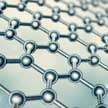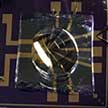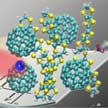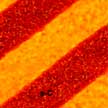Showing Spotlights 153 - 160 of 336 in category All (newest first):
 Currently, most graphene-based innovations are not yet at the level of large-scale commercial production. But public and private investments into graphene and its applications in products are large and whichever production methods eventually turn out to be successful, exposure to humans or the environment somewhere along the value chain or life-cycle of the material or product should be anticipated timely. A new review paper offers suggestions on how potential nanospecific safety issues can be addressed, by who and at what stage of the innovation process.
Currently, most graphene-based innovations are not yet at the level of large-scale commercial production. But public and private investments into graphene and its applications in products are large and whichever production methods eventually turn out to be successful, exposure to humans or the environment somewhere along the value chain or life-cycle of the material or product should be anticipated timely. A new review paper offers suggestions on how potential nanospecific safety issues can be addressed, by who and at what stage of the innovation process.
Oct 16th, 2017
 Just like traditional paper origami that results in complicated 3D structures from 2D paper, graphene origami allows the design and fabrication of carbon nanostructures that are not naturally existing but of desirable properties. In a new report, researchers describe how p-type and n-type doping of 2D sheets like graphene in selected areas could be exploited as two 'colors' to guide the sheets into preferred folded shapes where complementarily doped areas maximize their mutual overlap.
Just like traditional paper origami that results in complicated 3D structures from 2D paper, graphene origami allows the design and fabrication of carbon nanostructures that are not naturally existing but of desirable properties. In a new report, researchers describe how p-type and n-type doping of 2D sheets like graphene in selected areas could be exploited as two 'colors' to guide the sheets into preferred folded shapes where complementarily doped areas maximize their mutual overlap.
Oct 6th, 2017
 In order to fully exploit the potential of neural interfaces, the forthcoming generation of devices is expected to simultaneously offer multiple functionalities, including recording and stimulation of electrical activity, recognition of neurotransmitters, neuromodulators and other neurologically relevant biomolecules, as well as the capability for controlled drug delivery. Graphene and other 2D materials possess an array of properties (flexibility, electrical mobility, large surface area available for interaction with the neuronal components and amenable to surface modifications) that can enable enhanced functional capabilities for neural interfaces.
In order to fully exploit the potential of neural interfaces, the forthcoming generation of devices is expected to simultaneously offer multiple functionalities, including recording and stimulation of electrical activity, recognition of neurotransmitters, neuromodulators and other neurologically relevant biomolecules, as well as the capability for controlled drug delivery. Graphene and other 2D materials possess an array of properties (flexibility, electrical mobility, large surface area available for interaction with the neuronal components and amenable to surface modifications) that can enable enhanced functional capabilities for neural interfaces.
Sep 22nd, 2017
 Two-dimensional (2D) energy materials have outstanding physical and chemical properties in contrast to their bulk counterparts. This is particularly true for charge storage devices such as lithium-ion batteries and supercapacitors. Unfortunately, when directly applying these 2D nanostructured materials for energy storage, there is still a significant challenge as they may have serious self-restacking leading to decreased active surface areas and sluggish ion transport kinetics. Researchers have now developed an effective interlayer engineering strategy to improve sodium ion transport in 2D nanosheets via controlled organic intercalation.
Two-dimensional (2D) energy materials have outstanding physical and chemical properties in contrast to their bulk counterparts. This is particularly true for charge storage devices such as lithium-ion batteries and supercapacitors. Unfortunately, when directly applying these 2D nanostructured materials for energy storage, there is still a significant challenge as they may have serious self-restacking leading to decreased active surface areas and sluggish ion transport kinetics. Researchers have now developed an effective interlayer engineering strategy to improve sodium ion transport in 2D nanosheets via controlled organic intercalation.
Sep 13th, 2017
 Current insulin detection methods are time-consuming with a low sensitivity, and are hence not adequate for rapid and direct detection of insulin at clinically appropriate concentrations. A novel graphene nanotechnology sensor is highly sensitive to changes in the charge distribution on and in the immediate vicinity of the graphene surface and can respond to physiological insulin concentration variations in a sensitive and rapid manner, thereby enabling real-time insulin monitoring.
Current insulin detection methods are time-consuming with a low sensitivity, and are hence not adequate for rapid and direct detection of insulin at clinically appropriate concentrations. A novel graphene nanotechnology sensor is highly sensitive to changes in the charge distribution on and in the immediate vicinity of the graphene surface and can respond to physiological insulin concentration variations in a sensitive and rapid manner, thereby enabling real-time insulin monitoring.
Aug 30th, 2017
 Due to their unique interlayer coupling and optoelectronic properties, van der Waals heterostructures are of considerable interest for the next generation nanoelectronics. Conventional 2D heterostructures usually are composed of two layers of opposite charge carrier type using inorganic materials. One of the challenges when creating 2D heterostructures is the painstaking stacking of the individual components on top of each other. Researchers have now found, for the first time, that there can also be charge transfer (CT) induced interfacial coupling between two different pairs of organic CT layers.
Due to their unique interlayer coupling and optoelectronic properties, van der Waals heterostructures are of considerable interest for the next generation nanoelectronics. Conventional 2D heterostructures usually are composed of two layers of opposite charge carrier type using inorganic materials. One of the challenges when creating 2D heterostructures is the painstaking stacking of the individual components on top of each other. Researchers have now found, for the first time, that there can also be charge transfer (CT) induced interfacial coupling between two different pairs of organic CT layers.
Aug 23rd, 2017
 Although graphene properties and applications have already been well-discussed in the literature, it also is important to understand how 2D chemistry of graphene and graphene analogs is related to various applications. Graphene functionalization modifies the unique 2D features of graphene. In this way, the electronic and physical properties of graphene can be controlled toward the given purpose such as highly effective novel electronic device applications. Already, graphene functionalization such as adsorption, intercalation, and doping toward device applications has attracted great attention.
Although graphene properties and applications have already been well-discussed in the literature, it also is important to understand how 2D chemistry of graphene and graphene analogs is related to various applications. Graphene functionalization modifies the unique 2D features of graphene. In this way, the electronic and physical properties of graphene can be controlled toward the given purpose such as highly effective novel electronic device applications. Already, graphene functionalization such as adsorption, intercalation, and doping toward device applications has attracted great attention.
Aug 10th, 2017
 Researchers have developed a stretchable and transparent graphene-based electronic tattoo (GET) sensor that is only hundreds of nanometers thick but demonstrates high electrical and mechanical performance. They show that a GET can be fabricated through a simple wet-transfer/dry-patterning process directly on tattoo paper, allowing it to be transferred on human skin exactly like a temporary tattoo, except this sensor is transparent. Due to its ultra-thinness, a GET can fully conform to the microscopic morphology of human skin via just van der Waals interactions and can follow arbitrary skin deformation without mechanical failure or delamination for an extended period of time.
Researchers have developed a stretchable and transparent graphene-based electronic tattoo (GET) sensor that is only hundreds of nanometers thick but demonstrates high electrical and mechanical performance. They show that a GET can be fabricated through a simple wet-transfer/dry-patterning process directly on tattoo paper, allowing it to be transferred on human skin exactly like a temporary tattoo, except this sensor is transparent. Due to its ultra-thinness, a GET can fully conform to the microscopic morphology of human skin via just van der Waals interactions and can follow arbitrary skin deformation without mechanical failure or delamination for an extended period of time.
Jul 31st, 2017
 Currently, most graphene-based innovations are not yet at the level of large-scale commercial production. But public and private investments into graphene and its applications in products are large and whichever production methods eventually turn out to be successful, exposure to humans or the environment somewhere along the value chain or life-cycle of the material or product should be anticipated timely. A new review paper offers suggestions on how potential nanospecific safety issues can be addressed, by who and at what stage of the innovation process.
Currently, most graphene-based innovations are not yet at the level of large-scale commercial production. But public and private investments into graphene and its applications in products are large and whichever production methods eventually turn out to be successful, exposure to humans or the environment somewhere along the value chain or life-cycle of the material or product should be anticipated timely. A new review paper offers suggestions on how potential nanospecific safety issues can be addressed, by who and at what stage of the innovation process.
 Subscribe to our Nanotechnology Spotlight feed
Subscribe to our Nanotechnology Spotlight feed





